Foundations: 3 - Chicken Soup
What came first, the chicken or the flu
Hello and welcome back to Foundations!
The idea behind Foundations is simple; I want to teach you what I know about cooking. These are the fundamentals, the building blocks, the stuff that once you understand it, will allow you to become the kind of cook who can open a cupboard or fridge and make something delicious without using a recipe. If you haven’t already, you might like to read the introductory piece explaining this project in more detail here.
There is a wonderful irony in the lateness of this newsletter. Although it didn’t feel it at the time, being too ill to write about chicken soup is quite funny. Irony might be my favourite flavour of comedy; life’s own little jokes.
A few days before Christmas, just as I was getting busy wrapping sausages in bacon and presents in paper, I woke up with that hot prickly feeling in the back of my nose that tells you a grubby little virus has arrived to ruin your plans. I spent Christmas week dosed up to my eyeballs on an arsenal of powders, pills and sprays that would’ve made Hunter Thompson jealous.
There’s a feeling of magical realism in sitting at the Christmas dinner table eating turkey with a catatonic smile, completely blissed out on co-codamol. My unfocused eyes gazing into the middle distance while I explain to people I haven’t seen since I was a foot shorter that my job is writing recipes on a thing called ‘the internet’ (some have heard of it). Opiates ought to be more readily available on prescription for family gatherings.
The icing on the Christmas cake, the angel on the tree, was that just as my cold had almost disappeared, a new symptom arrived. A sore throat of an intensity hitherto unknown - it felt like I’d been gargling with coarse-grit sandpaper. This, it turned out, was not a continuation of the cold but a bacterial infection, which meant antibiotics. This weekend, I ate my first solid food in 3 days (toast) and decided that Alexander Fleming is the best thing since sliced bread.
This is not a cry for sympathy, but a long winded way to say that I’m sorry this newsletter is arriving later than planned. It’s not because I didn’t want to write about chicken soup, I just didn't want to write about chicken soup as much as I wanted to lay in bed and watch Roman Holiday and eat Strepsils like popcorn.
What is Chicken Soup?
That depends on who you ask, but it’s essentially always some combination of chicken broth, chicken meat, vegetables, pulses or carbohydrates and aromatics (herbs and spices). Because the base of the soup is the broth, this has to be good, otherwise there’s no point. We talked all about making chicken broth (stock) last time so this seemed like a perfect continuation. And if you’re quick, you might even have time to get a batch into the fridge/freezer before the lurgy gets you.
Chicken Soup Around The World
One of the best things about writing this newsletter for you is how much I get to learn in the process. Sure, I already know some of what I’m writing about before I start; I’ve made a lot of chicken stock and I’ve made that stock into chicken soup many times. I’ve also eaten chicken soup in other countries, but I’ve never sat down and spent two hours reading about all of the different varieties of chicken soup that you find around the world and how they’re made. I have now.
The version I’m most familiar with is the kind you find in my part of the world, the UK (and neighbouring France) both make a very similar kind of chicken soup, a broth with chicken meat and vegetables in it, usually flavoured with things like bay leaves and thyme. The French sometimes add a little white wine, which never hurts.
German chicken soup follows a similar theme, as do many countries in Europe, but there are some distinct differences in personality between them. In Poland, chicken soup is taken pretty seriously and is a key part of Sunday lunch. Rosół, as it’s called in Polish, is a chicken broth made with capellini, vegetables and parsley and is served separately to the chicken meat itself. Then you have rosół królewsk, the royal version, made with 3 meats, mushrooms and burnt onion and cooked for many hours. Rosół myśliwski is a hunters soup made with wild birds like partridge and pheasant, dried mushrooms and juniper.
In Romania, chicken soup is seasoned with lovage and borș, a fascinating ingredient of wheat or barely fermented in water which gives a sour flavour in the same way lemon juice or vinegar would.
In Italy, soups and broths are the only time you really find the combination of chicken and pasta together. This can be in the form of minestrone (which literally means ‘big soup’) but also when the broth is used for dishes like tortellini in brodo, little meat ravioli served in a broth made from rooster.
Hungarian chicken soup, újházi, is made with the chicken’s offal (excellent) and various vegetables and spices. Greek chicken soup is a real favourite of mine and includes the ingenious addition of ‘avgolemono’ (egg-lemon) where lemon juice and egg are whisked together and then slowly stirred into the hot soup to make it thick, creamy and tangy. This happens because of a process called coagulation, in which the proteins in the egg begin to set at temperatures above 60c. An interesting phenomenon for another day.
As you travel further, the soup changes more. In Ghana, ‘chicken light soup’ is cooked in a spicy blend of tomatoes, onions and peppers and served with fufu (pounded yam). In Indonesia, turmeric gives soto ayam its vibrant yellow colour, and here the soup is served with noodles and lontong, a kind of rice cake.
There are countless versions of caldo de pollo across Latin America, in Peru you’ll find it with potatoes, hard boiled eggs and lime. Mexican caldo tlalpeño is served with avocado and diced cheese.
Korean chicken soup is made with ginseng and jujube fruits. Japanese chicken soup differs in one key way - it’s made with dashi instead of chicken stock, but otherwise follows the chicken + broth + other bits formula.
Back to Europe. Here, there is a particularly strong link between chicken soup and the Ashkenazi Jewish kitchen (which has spread to the US). The history of the Ashkenazi people and their cuisine is not a kind one. Exiled from Western Europe in the medieval period, most of the population lived in poverty, often forbidden from owning land and therefore growing crops. This is reflected in the cuisine, which is often very simple in terms of ingredients, and relied on the cook to eke out every last ounce of flavour from very little.
Jewish chicken soup is often served with matzo balls, kreplach (meat filled dumplings) or noodles. An interesting traditional garnish are the unlaid eggs found inside freshly killed chickens known as ‘eyerlekh’ - eggs which are yet to form shells, and can be boiled in the soup as you would a regular egg.
In the recipe below, I suggest frying the onion in the chicken fat skimmed from the top of your stock, because it's delicious. This is not my idea though, cooking with chicken fat or ‘schmaltz’ is another tradition of the Ashkenazi kitchen and was used in place of olive oil (unavailable in Northern Europe) or lard (which is not kosher). True schmaltz is rendered from chicken in the same way that tallow is from beef, but this is also a great way to cook with chicken fat and achieve a similar flavour.
As Medicine
A unifying factor of almost every chicken soup in every cuisine is its use as a medicine. Some of them claim to be preventative, others are a cure for when you’re already ill. Some even promise the extra benefit of making you ‘strong’ and ‘virile’ downstairs - so what if you can’t breathe!
Clever people in laboratories have actually looked into these claims. The evidence for chicken soup’s medicinal properties is patchy, it doesn't appear that there’s any direct correlation between the two although it might exhibit some anti-inflammatory properties. It appears there is a lack of research on chicken soup’s efficacy on virility. I guess you just can’t get the funding these days. What we do know though, is that a warm bowl of something delicious and nutritious is always an excellent way to make yourself feel better.
I also think that to always draw a correlation between chicken soup and medicine (like I have throughout this newsletter) is a very limiting way to think about this dish, because it’s really delicious and easy to make at any time, so why wait until you’re sick?
To Make a Chicken Soup
To make your own chicken soup you just take a basic formula and then choose your pieces. Once you’ve got your chicken broth and (optional) meat, you can choose which direction you want to take your soup in by playing around with different vegetables, pulses/carbohydrates and aromatics. You could add chilli, lime leaves and coconut milk, or small pasta, fresh herbs and pecorino.
My recipe below is very simple and really just builds on the flavours that are already in the broth. We start with the onion cooked in chicken fat, then add the broth, carrot and celery. Rice, my carb of choice, not only adds some heft to the dish but by cooking it directly in the soup like this, the starch the rice releases gives it a nice mouthfeel. If you’re making this with leftover roast chicken then follow the recipe below. If you’re starting with uncooked chicken then poach it in the chicken stock first in a separate pan until cooked, remove and chop/shred, then continue from there. I like to finish the soup with a really generous squeeze of lemon juice which I think lifts it a lot, and a little fresh parsley for colour is great too.
There aren't too many technical aspects that needs unpacking and breaking down here. Next week when we use our chicken stock a final time to make a risotto, there will be a lot more talk about starch, stirring, swelling and resting, but for now here’s a simple recipe for a chicken soup.
The Recipe
Ingredients:
1 Onion, not too finely diced (I love decent sliver of translucent onion in a soup)
1 Clove of garlic, minced or crushed
2 tbsp chicken fat (or butter)
1 Carrot, cut into roughly 1cm chunks
2 Sticks of Celery, cut on the diagonal about 1/2cm thick
750ml chicken stock
150g rice, any kind will work but remember brown will take longer to cook
300g cooked chicken meat, either roughly chopped or shredded
1 Lemon
Handful of roughly chopped parsley
Method:
Place a suitably sized saucepan over a medium low heat, add the chicken fat and onion and cook until soft but not browned, about 5 mins. Add the garlic, stir and cook for 30 seconds.
Add the carrot, celery, chicken stock and rice. If the stock is unsalted, add a really generous teaspoon of salt too. Bring to a simmer and cook for 10 minutes, stirring occasionally, then add the cooked chicken meat and cook gently for another 5 mins.
Remove from the heat, squeeze in most of the juice of a lemon and stir in the parsley. Now taste and add more salt and lemon as needed. Ladle into bowls and eat as is, or with a chunk of buttered crusty bread for dunking.
End
Thank you for your patience waiting for this one. I hope you enjoyed our little trip around the world of chicken soup, and enjoy making this simple recipe (or your own version of it). Remember that chicken soup is for life, not just for sickness. I’ll see you back here next week (really!) for a deep-dive into all things risotto. Happy New Year and best wishes.



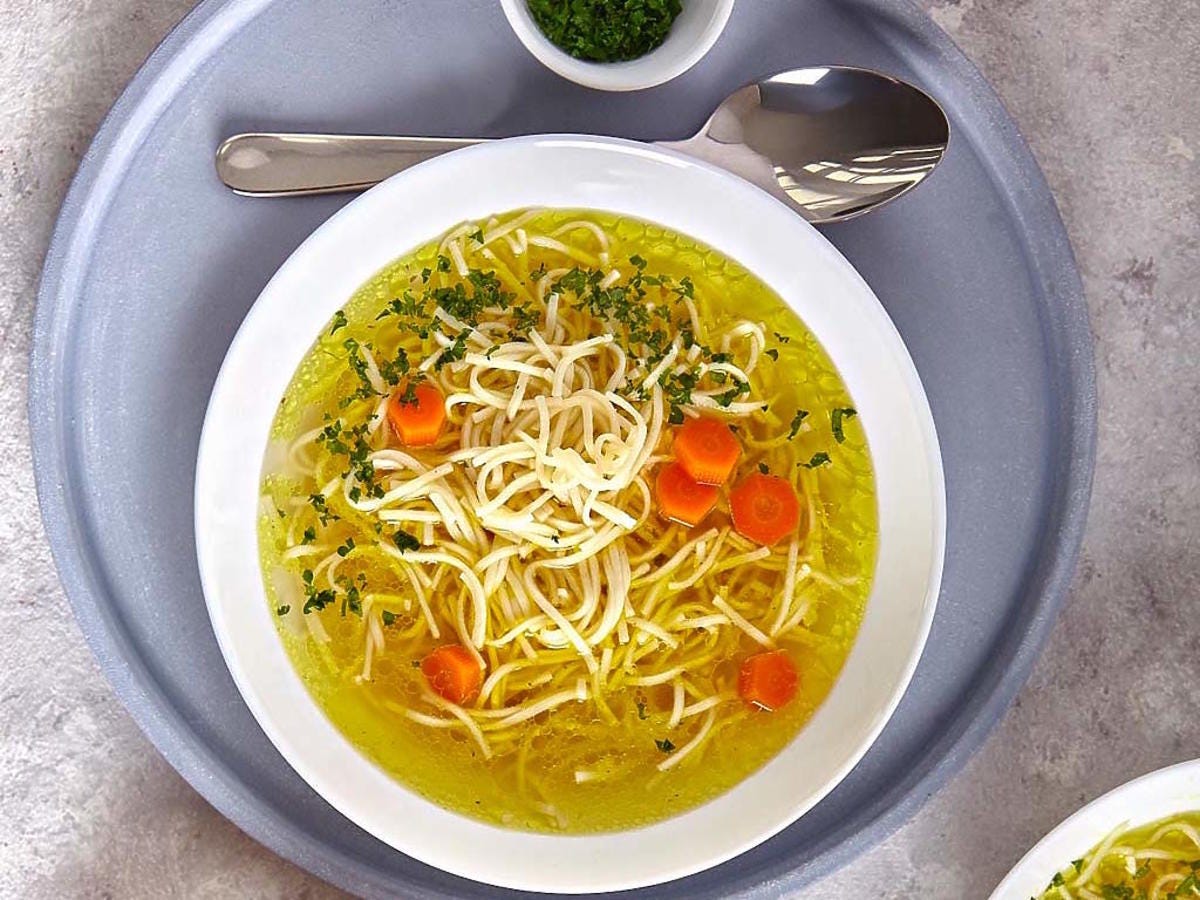
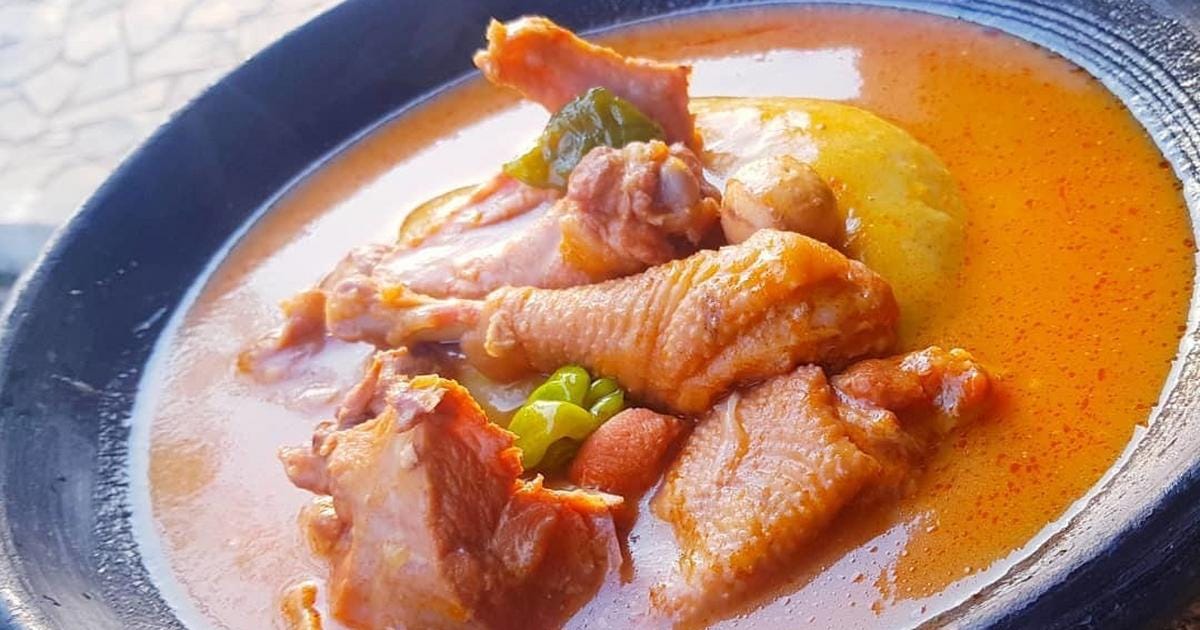
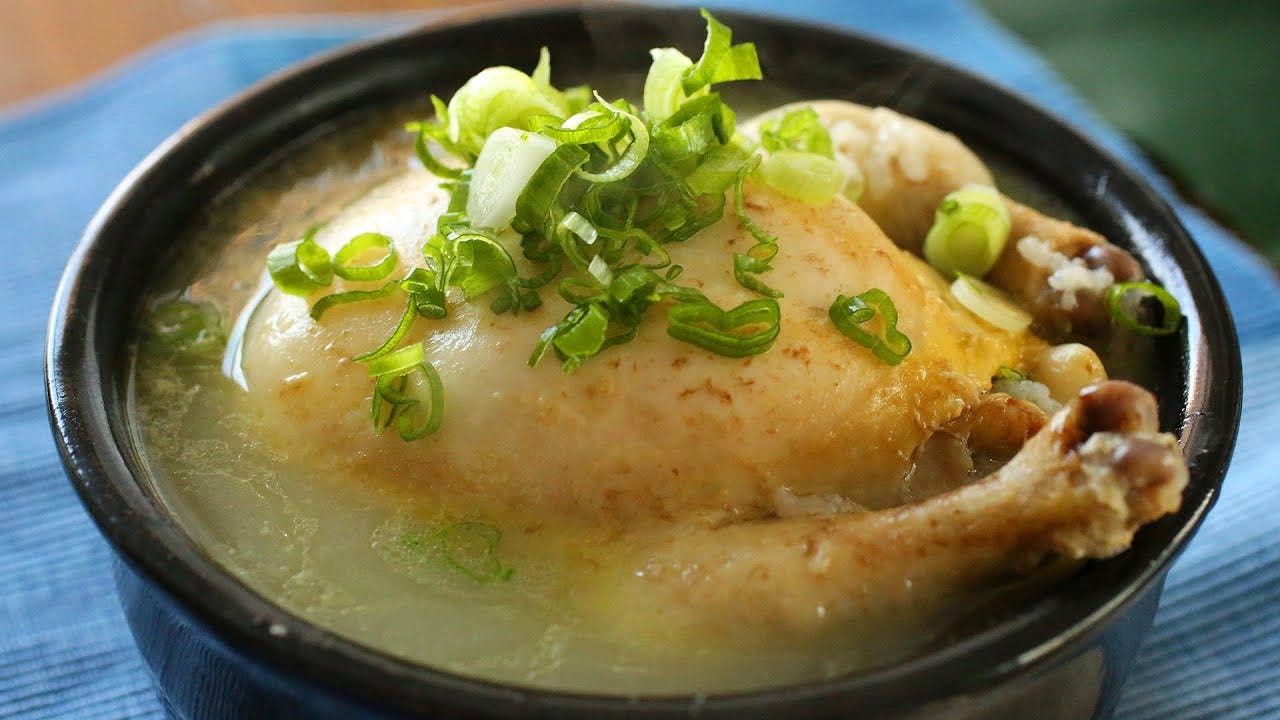
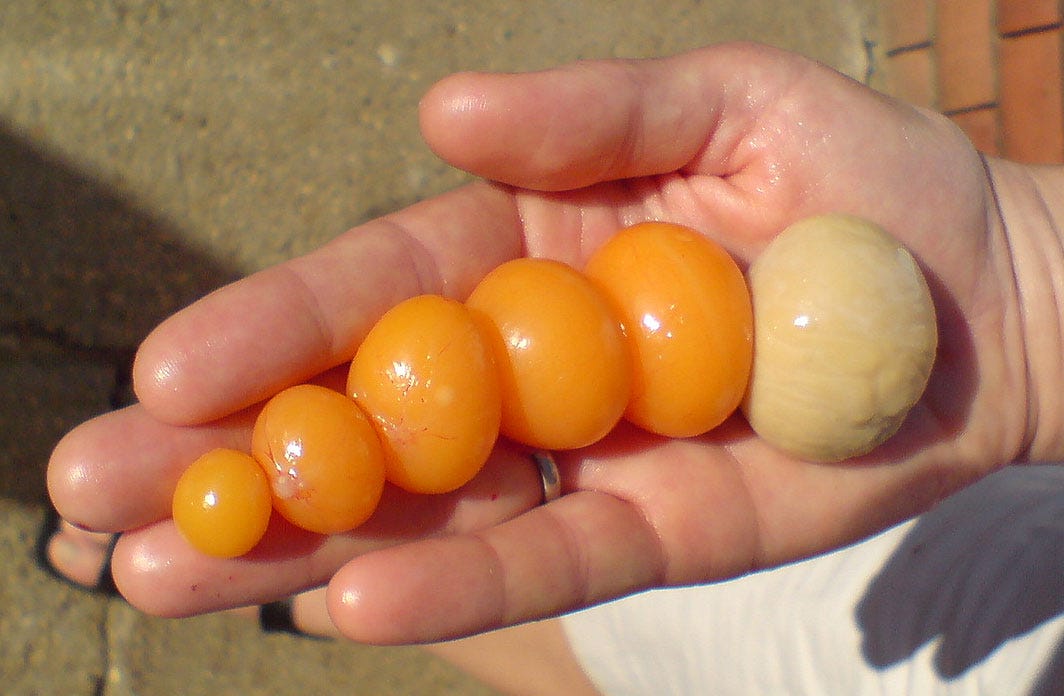
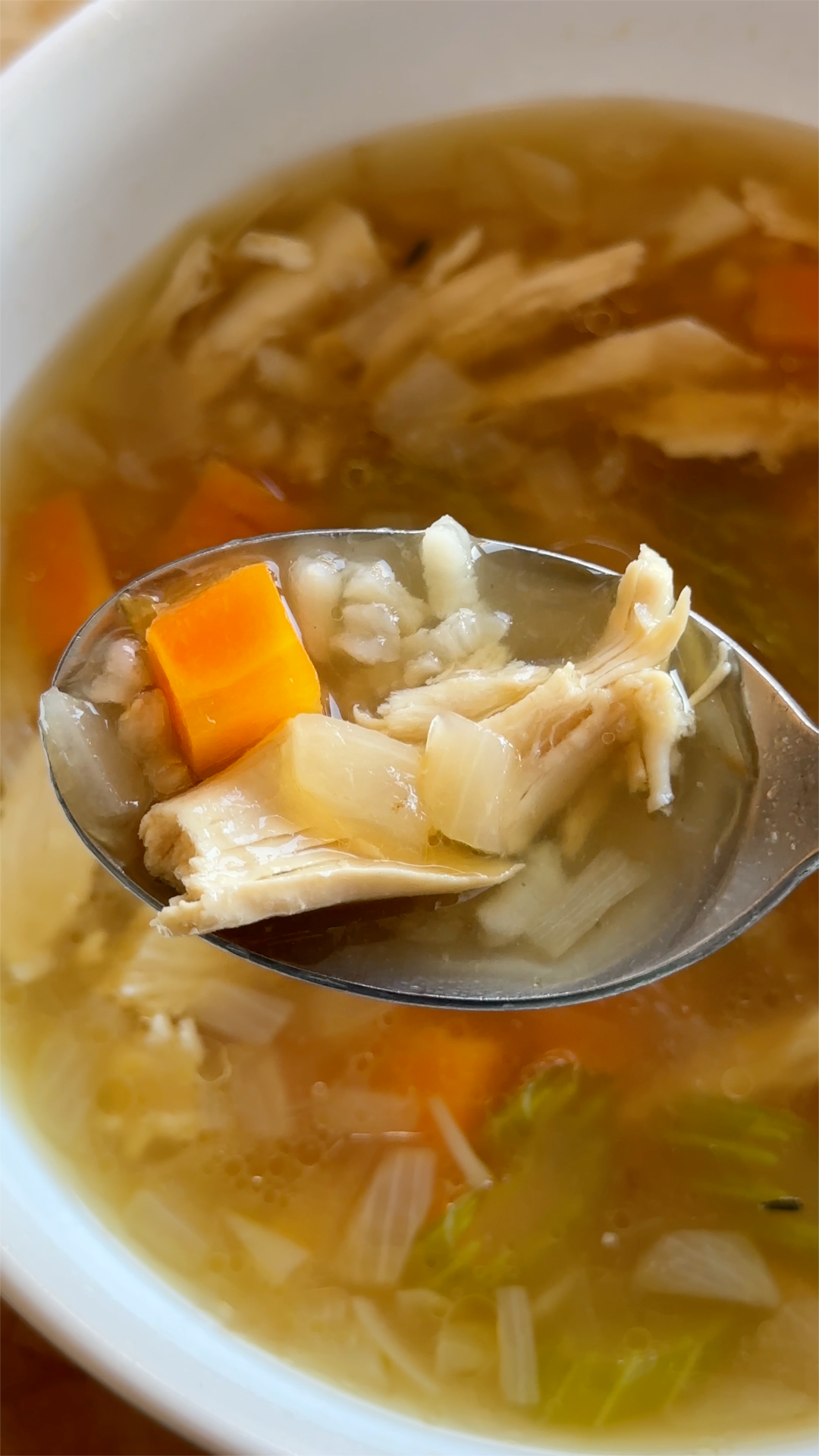
In case you haven't read it, I think you'd enjoy The Chicken Soup Manifesto!! https://www.jennlouis.com/new-products/the-chicken-soup-manifesto
I raise my own chickens (and ducks and guineafowl) on acreage in Australia.
I've always liked chicken soup, but I am now utterly addicted to it, and consider that a plain, relatively "thin" soup with some additives - like you, I like celery and carrot in mine - plus finely-shredded chicken - is the uttermost thing to which a chicken can aspire.
Why?
Because a soup/broth/stock made with a commercial 6/8-week-old "chicken" cannot compare in flavour, richness, depth, and sheer magical goodness of one made from a 26-week-old cockerel who has lived his life in the sunlight. It's even better if they're a year or more old.
The first time I made this with my own chicken, I finally understood about Jewish chicken soup curing _everything_. I fed this to my mother when she was sick in hospital with newly-diagnosed emphysema via bronchitis, and "she wasn't hungry". I did the most traditional thing of all - made this soup (this particular base contained the remains of the Xmas turkey, which I always keep, in addition to home-raised chicken), took it to the hospital in a thermos, and just sat there drinking it myself.
She lasted 10mins before asking for a cup. And then drank the lot and asked for more :). She called it "golden stock" because the roasted turkey bits gives it a rich golden colour.
My favourite party trick is creating "risotto from first principles". Technically it starts "first, raise a cockerel to 6 months old", but that's a long time to wait for risotto :). But I haul out a frozen chook, poach it very gently in pre-existing stock (ideally) or use it as the base of a new stock, strip off the meat, put the bones back to the stock, then make risotto from the chicken fat (skimmed), chicken pieces (stripped), chicken stock (simmering), and a few herbs and spices from the garden and pantry. Finished with frozen peas, because I adore peas in risotto, and of course grated cheese (or salted cured egg yolk for my father, who can't eat cheese).
The flavour is just amazing; incredibly rich and deep. People have watched every step of the process and still ask "what's in this?".
And that's the power of home-grown, mature chicken.
It's near-impossible to buy mature chicken in Australia. I know it's more readily available overseas. So most Australians have never tasted a truly rich chicken soup. Poor things.